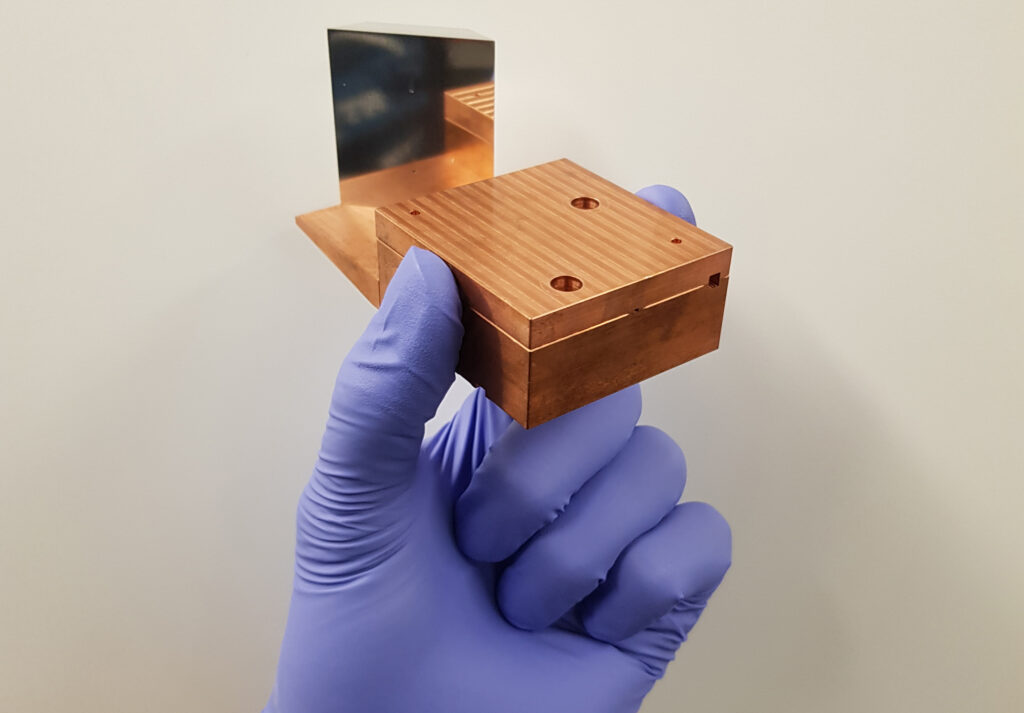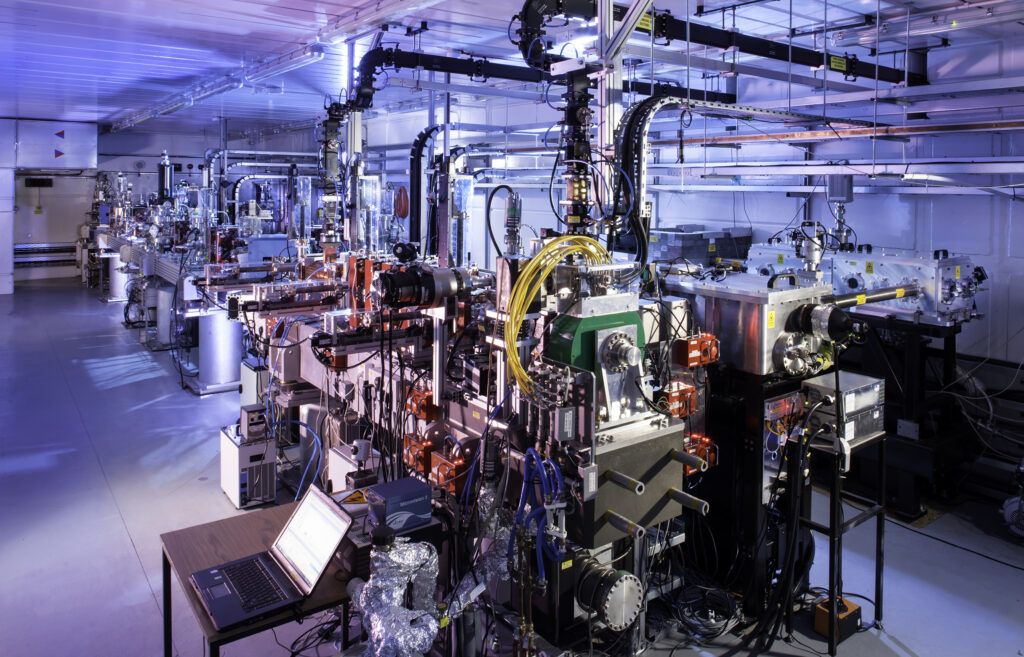Scientists from the Cockcroft Institute have successfully developed a pocket-sized particle accelerator capable of projecting ultra-short electron beams with laser light at more than 99.99% of the speed of light.
To achieve this result, the researchers, led by Lancaster and Manchester Universities, have had to slow down light to match the speed of the electrons using a specially designed metallic structure lined with ultrathin quartz layers.

This huge leap forward simultaneously offers the ability to both measure and manipulate particle bunches on time scales of less than 10 femtoseconds (1 femtosecond = 10-15 seconds). This will enable them to create strobe photographs of atomic motion.
This successful demonstration paves the way to the development of high-energy, high-charge, high-quality THz-driven accelerators, which promise to be cheaper and more compact. Reducing the size and cost of accelerator technology will open up these incredible machines to a much wider range of applications.
The work, published in Nature Photonics, involves a partnership between several members of the Cockcroft Institute and utilised the Compact Linear Accelerator for Research and Applications (CLARA) test facility at Daresbury Laboratory.

The unique solution demonstrated by the researchers is to use lasers to generate terahertz frequency pulses of light. Laser-generated THz radiation exists in the ideal millimetre-scale wavelength regime, making structure fabrication simpler but most importantly providing the half-cycle lengths that are well suited for acceleration of whole electron bunches with high levels of charge.
The project is led by Professor Steven Jamison of Lancaster University, in collaboration with Dr Darren Graham and Professor Robert Appleby at Manchester, and Professor Graeme Burt from Lancaster Engineering.
Project lead Professor Jamison from Lancaster University explained: “The controlled acceleration of relativistic beams with terahertz frequency laser-like pulses is a milestone in development of a new approach to particle accelerators. In using electromagnetic frequencies over one hundred times higher than in conventional particle accelerators, a revolutionary advance in the control of the particle beams at femtosecond time scales becomes possible.
“With our demonstration of terahertz acceleration of particles travelling at 99.99% of the speed of light, we have confirmed a route to scaling terahertz acceleration to highly relativistic energies.”
Lead author Dr Morgan Hibberd from the University of Manchester said: “The main challenge was matching the velocity of the accelerating THz field to the almost speed-of-light electron beam velocity, while also preventing the inherently lower velocity of the THz pulse envelope propagating through our accelerating structure from significantly degrading the length over which the driving field and electrons interact.
“We overcame this problem by developing a unique THz source which produced longer pulses containing only a narrow range of frequencies, significantly enhancing the interaction. Our next milestone is to demonstrate even higher energy gains while maintaining beam quality. We anticipate this will be realised through refinements to increase our THz source energy, which are already underway.”
While the researchers have an eye to a long term role of their concepts in replacing multi-kilometre scale research accelerators (such as Europe’s 3 km long x-ray-source in Hamburg) with devices mere metres in length, they expect the immediate impacts will be in the fields of radio-therapy and in materials characterisation.
Dr Darren Graham, Senior Lecturer in Physics at The University of Manchester said: “Achieving this milestone would not have been possible without the unique collaborative environment provided by the Cockcroft Institute, which has helped bring together scientists and engineers from University of Lancaster, The University of Manchester and the staff from STFC at Daresbury Laboratory”.
The full article can be accessed here:
Hibberd, M.T., Healy, A.L., Lake, D.S. et al. “Acceleration of relativistic beams using laser-generated terahertz pulses.” Nat. Photonics (2020).
